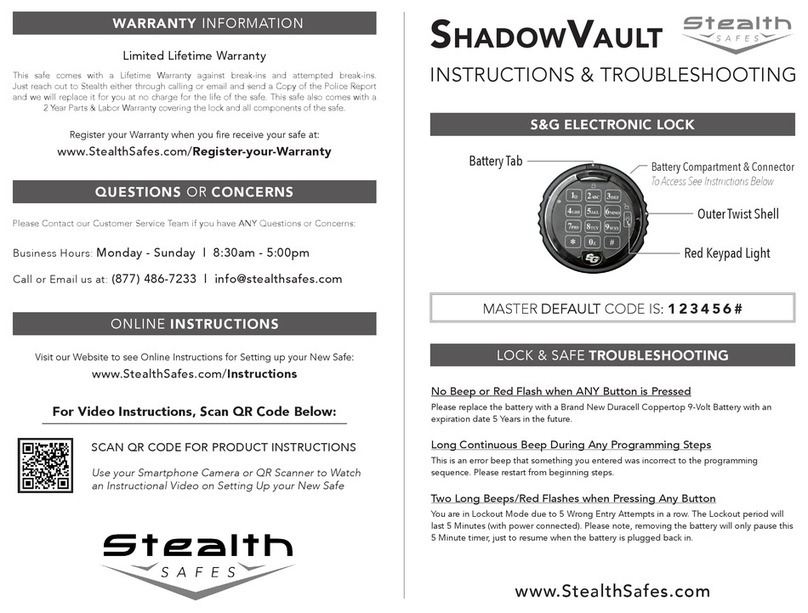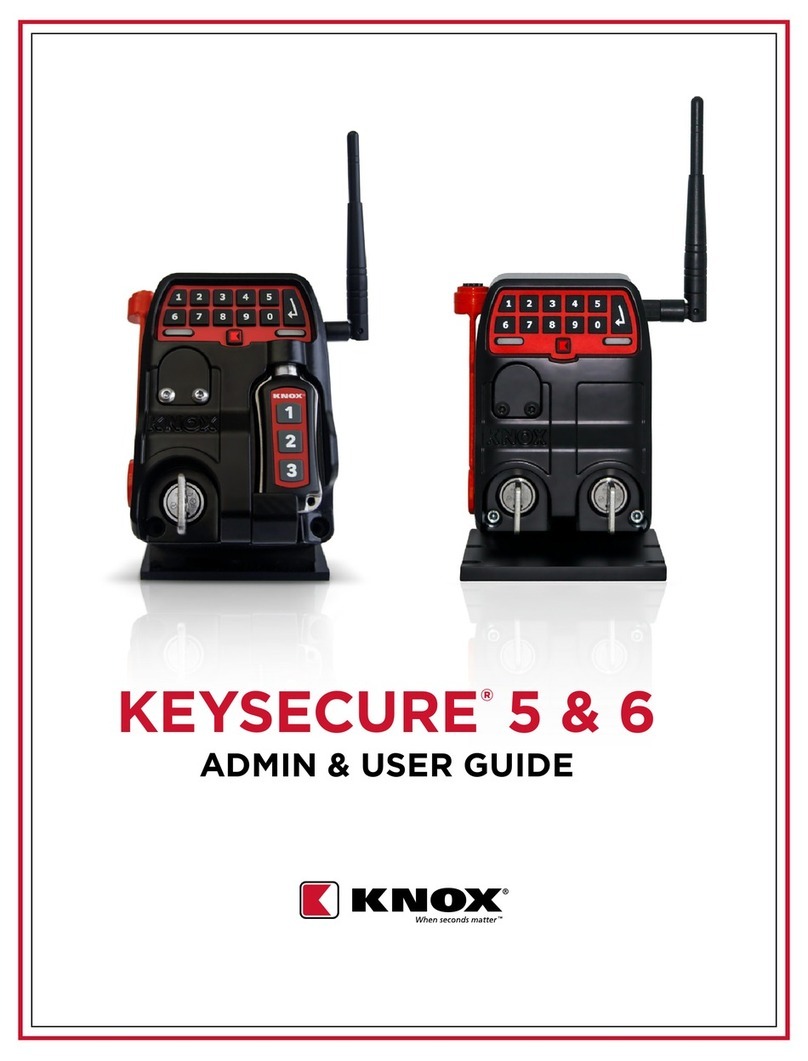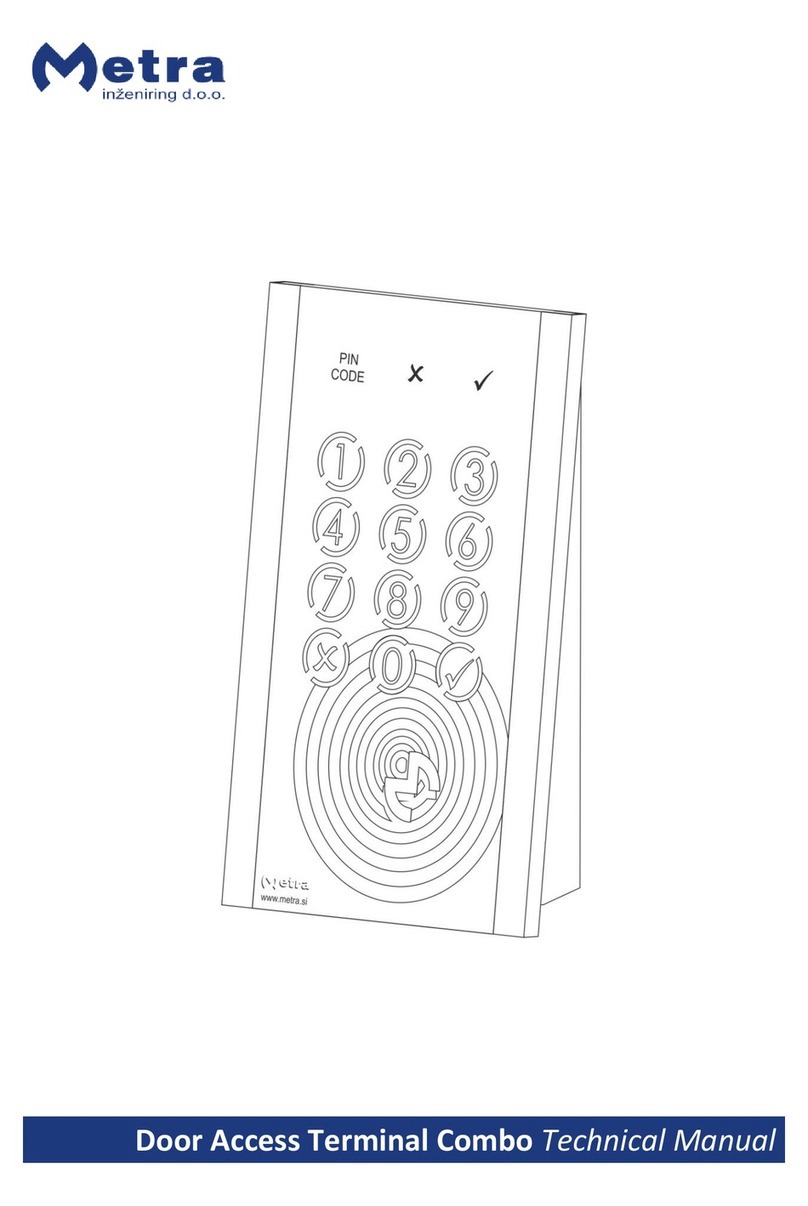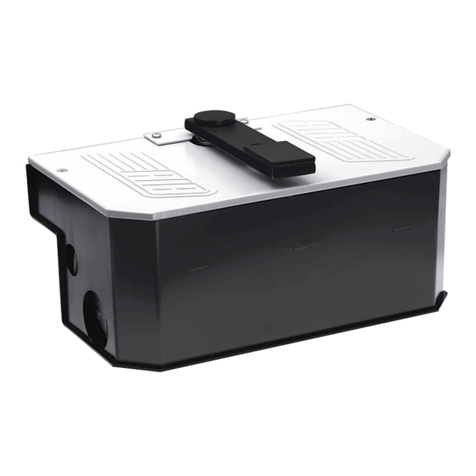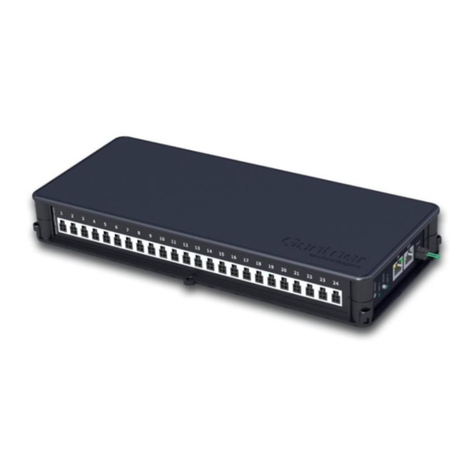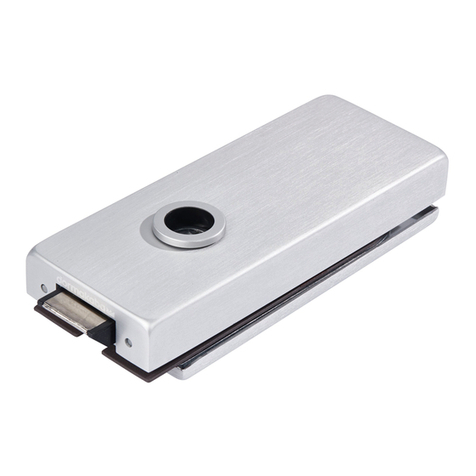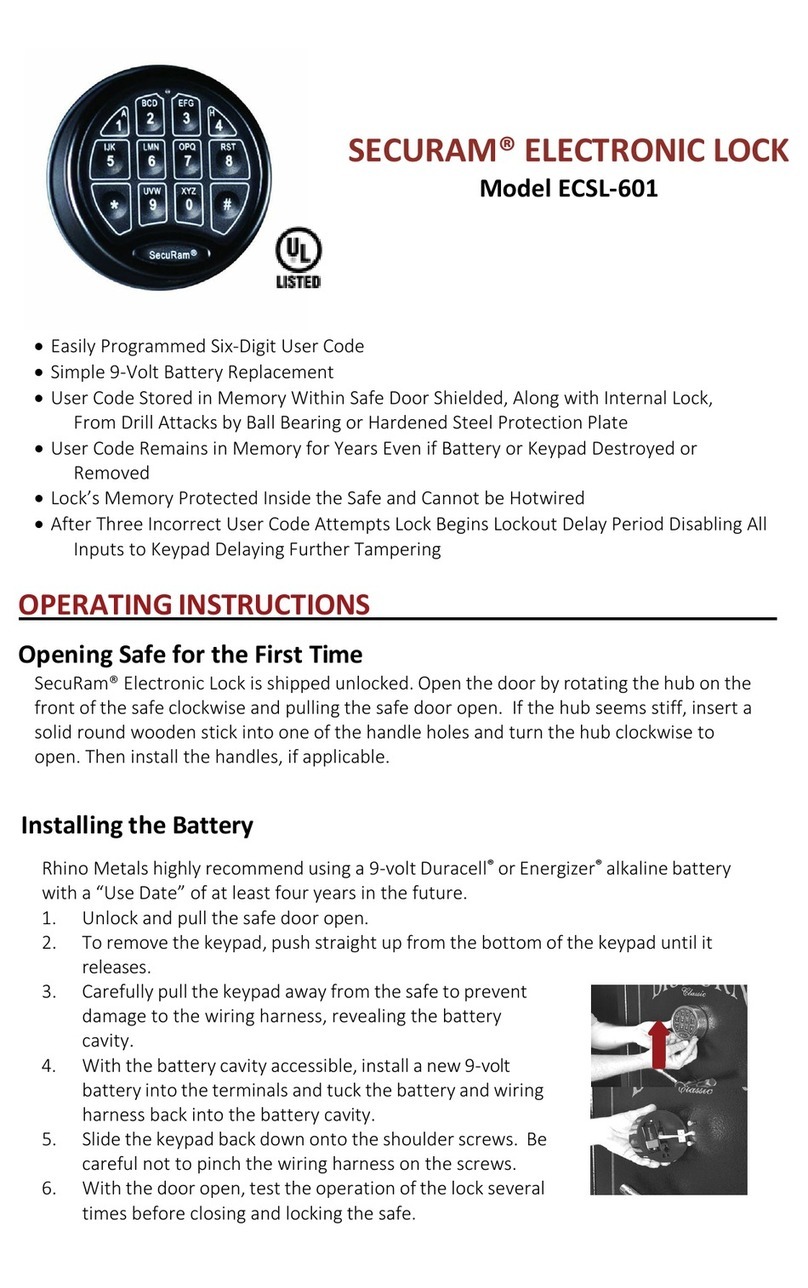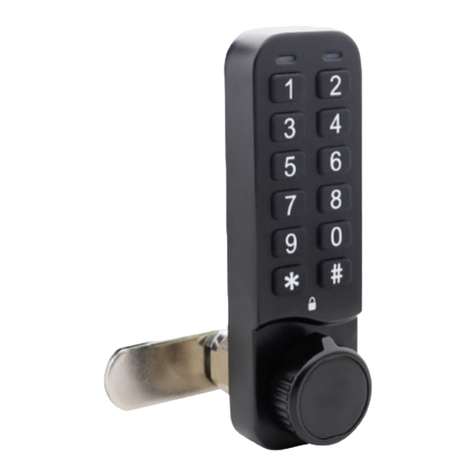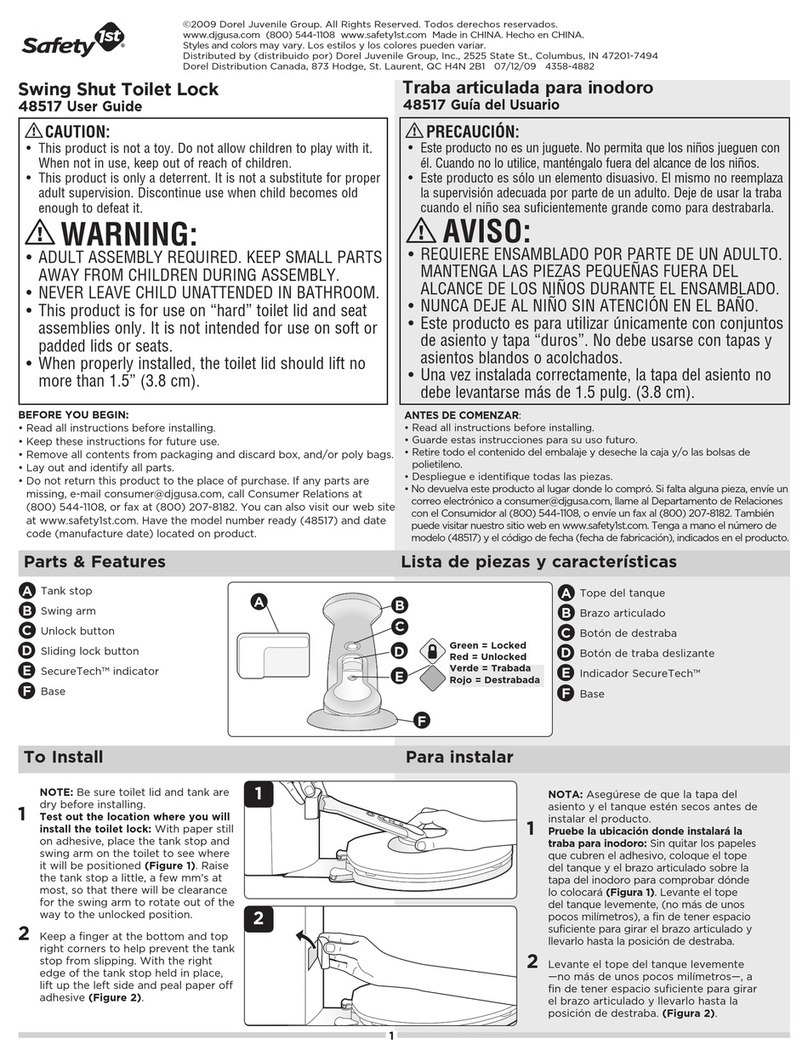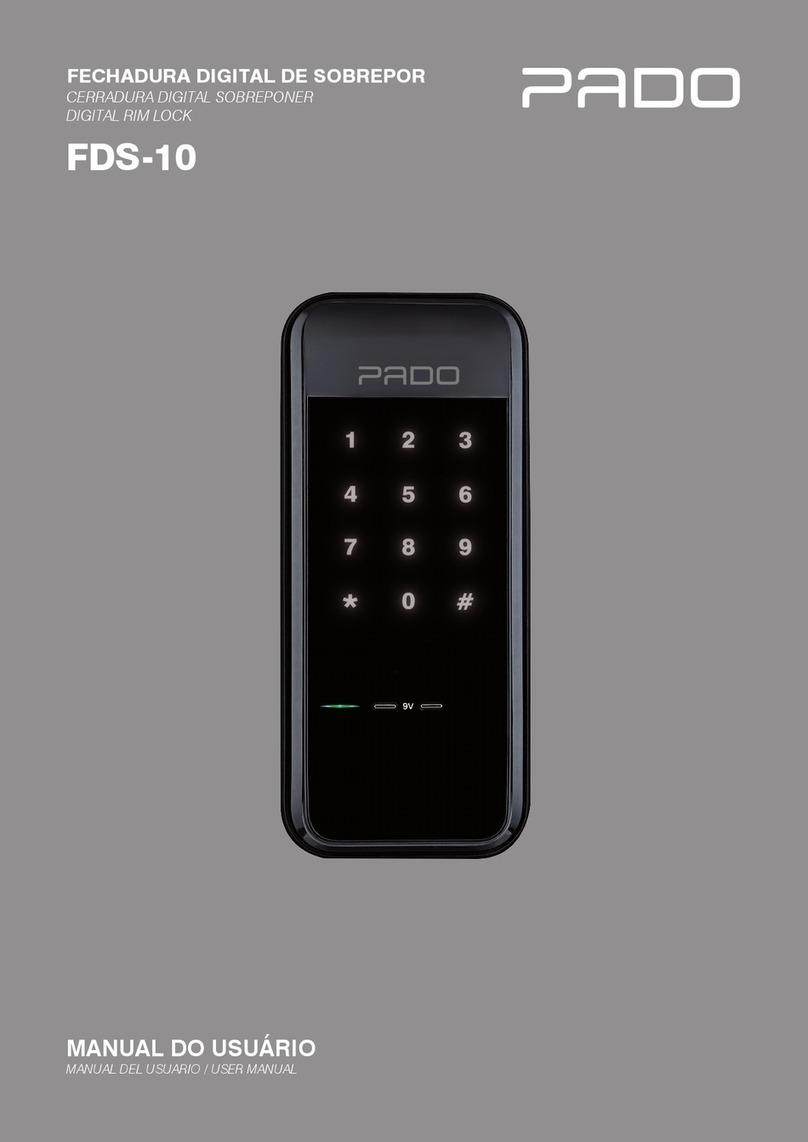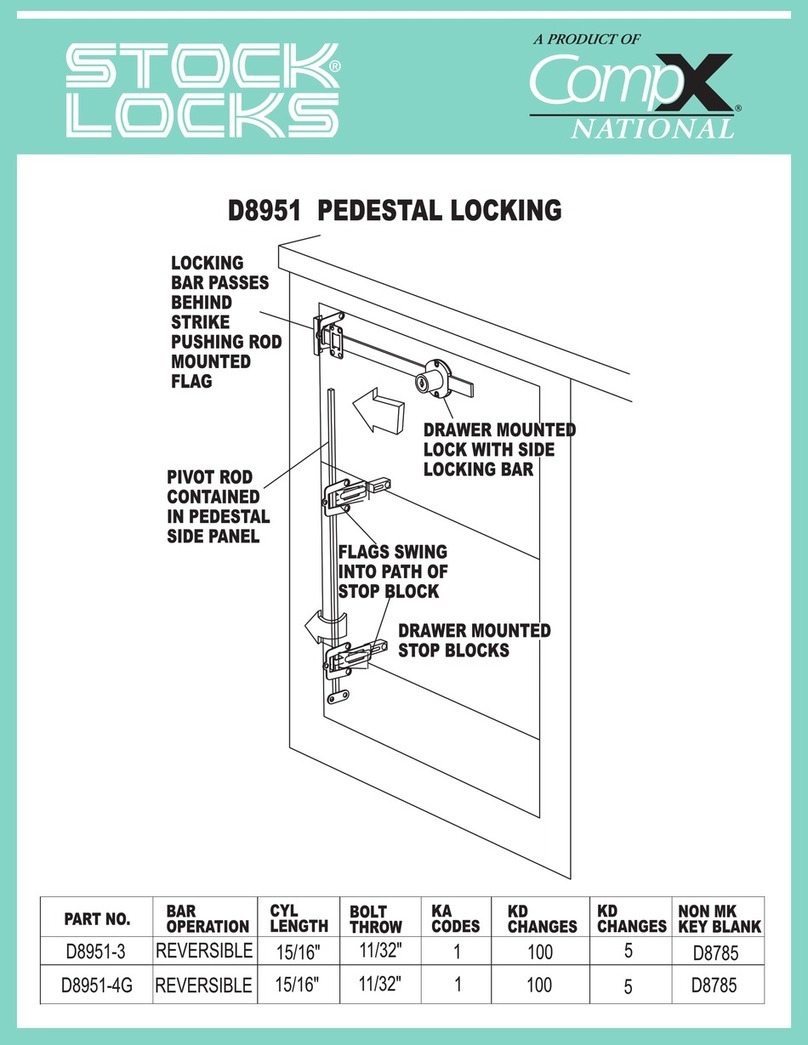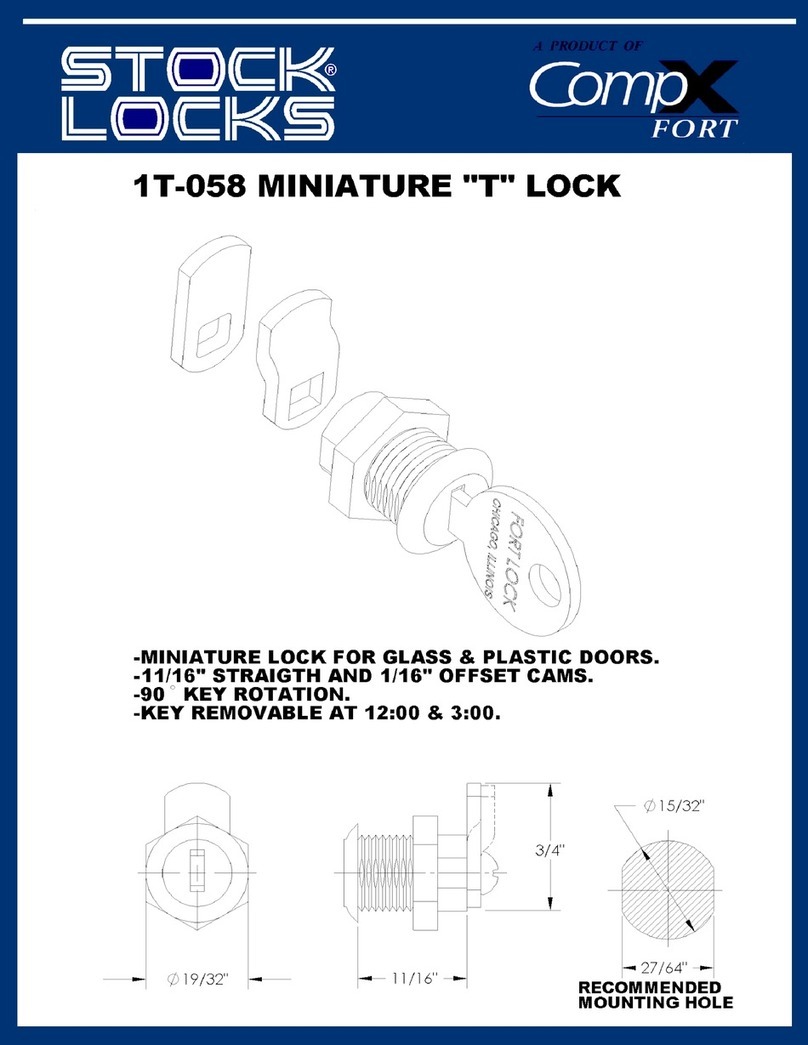
10 11
Safety instructions & important information
Important: If the door is closed during commissioning or battery replacement without the
battery being inserted, the door cannot be opened via the radio technology: Breaking open
the door is necessary. Follow the detailed instructions for installing and commissioning the ra-
dio system. When changing the battery, pay attention to the polarity (+/-). The polarity (+/-) is
marked on the bottom of the battery compartment and on the battery. Never store locks with
inserted battery directly next to each other and also not together with data carriers, otherwise
the battery will be discharged.
Important: When installing the lock and locking part, make sure that the door is not braced and
that this bracing is transferred to the locking system. There is a risk that the latch can no longer
open Malfunction. Avoid doors that are preloaded by a sealing rubber.
Intended use
Authorized opening of an electronic lock in wooden furniture by means of a coded chip. This
chip can be in the form of an ID card (check card format) or key fob. The function of the lock is
guaranteed only if it is placed on non-conductive materials (wood, plastic) with a maximum
material thickness of 20 mm. The reading distance also depends on the transponder design. In
case of a higher material thickness, metal doors or doors with metal overlay, an external antenna
should be attached.
Predictable abuse
If the lock is used in an explosive environment, outside the stated specications or for damage
resulting from improper use, the operator bears sole responsibility and the manufacturer ac-
cepts no liability.
Conversions or modications
Any modications to the latch lock are not permitted. The electromagnetic behavior of the latch
can be impaired by additions or modications of any kind. Therefore, do not make any changes
or additions to electrical/electronic components, otherwise the warranty and guarantee claim
will become void.
Spare and wear parts and auxiliary materials
The use of spare parts from third-party manufacturers can lead to hazards. Only use original
parts or parts approved by the manufacturer. The manufacturer accepts no liability for damage
resulting from the use of spare parts not approved by the manufacturer.
EEC Declaration of Conformity
in accordance with the directives
2004/108/EC Directive on electro-magnetic compatibility (EMC)
1999/5/EC 1999 Directive on radio equipment and telecommunications, terminal equip-
ment and the mutual recognition of their conformity (R&TTE)
2002/96/EC 2003 Directive on waste electric and electronic equipment (WEEE)
2011/65/EC Directive on the restriction of the use of certain hazardous substances in
electrical and electronic equipment (recast)
for the product: Keylezz®Turn
The following harmonised standards are applied:
EN 300330.2 V1.3.1 : 2006 EN 301489-3 V1.4.1 : 2002
EN ISO 12100: 2010 EN 50364 : 2010
Warranty conditions
This product has been carefully designed, manufactured and carries a warranty against defects
in materials or workmanship at the time of purchase. The warranty is valid for 12 months from
the date of purchase and may be claimed upon presentation of proof of purchase, if applicable.
The warranty obligation is limited to rectication of defects by repair or replacement of the
products free of charge. Costs and risks of transportation, assembly and disassembly expenses,
as well as any other costs associated with the repair cannot be reimbursed. Liability for conse-
quential damage to the device, of whatever nature, is excluded in principle.
Disposal
Danger! The electronics of the latch lock contain a lithium-ion battery. Dispose
of this battery in accordance with national regulations and not in household
waste. When disposing of partially discharged batteries, make sure that no
When disposing of partially discharged batteries, make sure that no uninten-
tional short circuits (e.g. caused by key rings in clothing pockets) can occur
between the poles of the battery. Risk of explosion and re. When transporting
the locks, pack the battery in such a way that no short circuit can occur (e.g. tape the poles with
non-conductive adhesive tape).
Important! Separate the electronics of the latch lock from the remaining parts and dispose of
them according to local regulations and guidelines.

